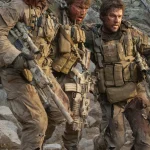The Thin Red Line (1998)
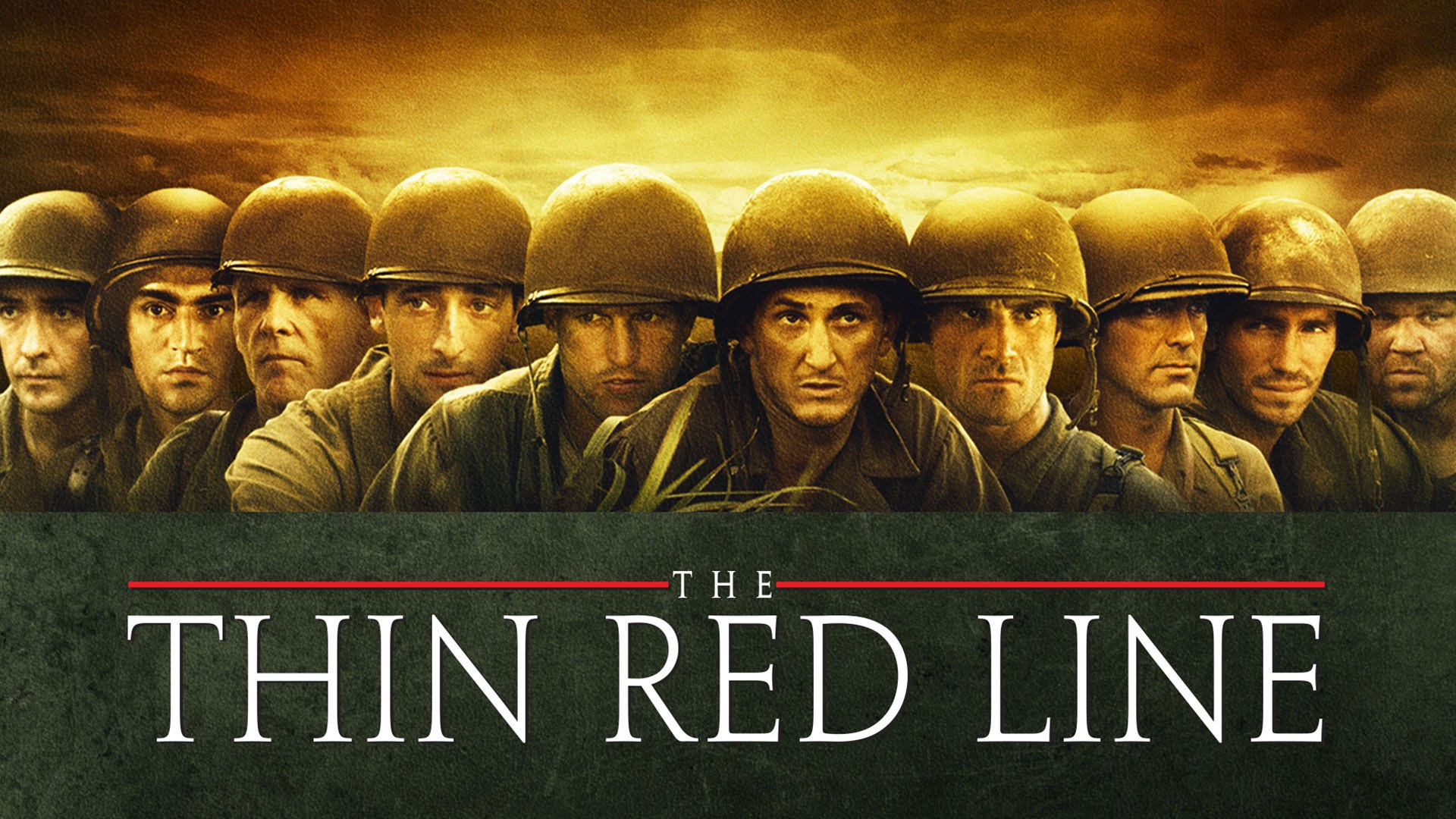
The Thin Red Line (1998): A Philosophical and Visual Masterpiece on the Nature of War
The Thin Red Line is an unforgettable journey into the heart of war, offering a contemplative, soul-stirring perspective that redefines the traditional war film. Directed by the visionary Terrence Malick, the movie is set during the Battle of Guadalcanal in World War II, one of the fiercest confrontations in the Pacific Theater. This film doesn’t just show the physical brutality of war but delves deeply into the psychological and existential struggles of the soldiers who fight in it. Adapted from James Jones’s semi-autobiographical novel, The Thin Red Line portrays not only the external conflicts of combat but also the internal battles that each soldier faces when confronted with the destructive power of war.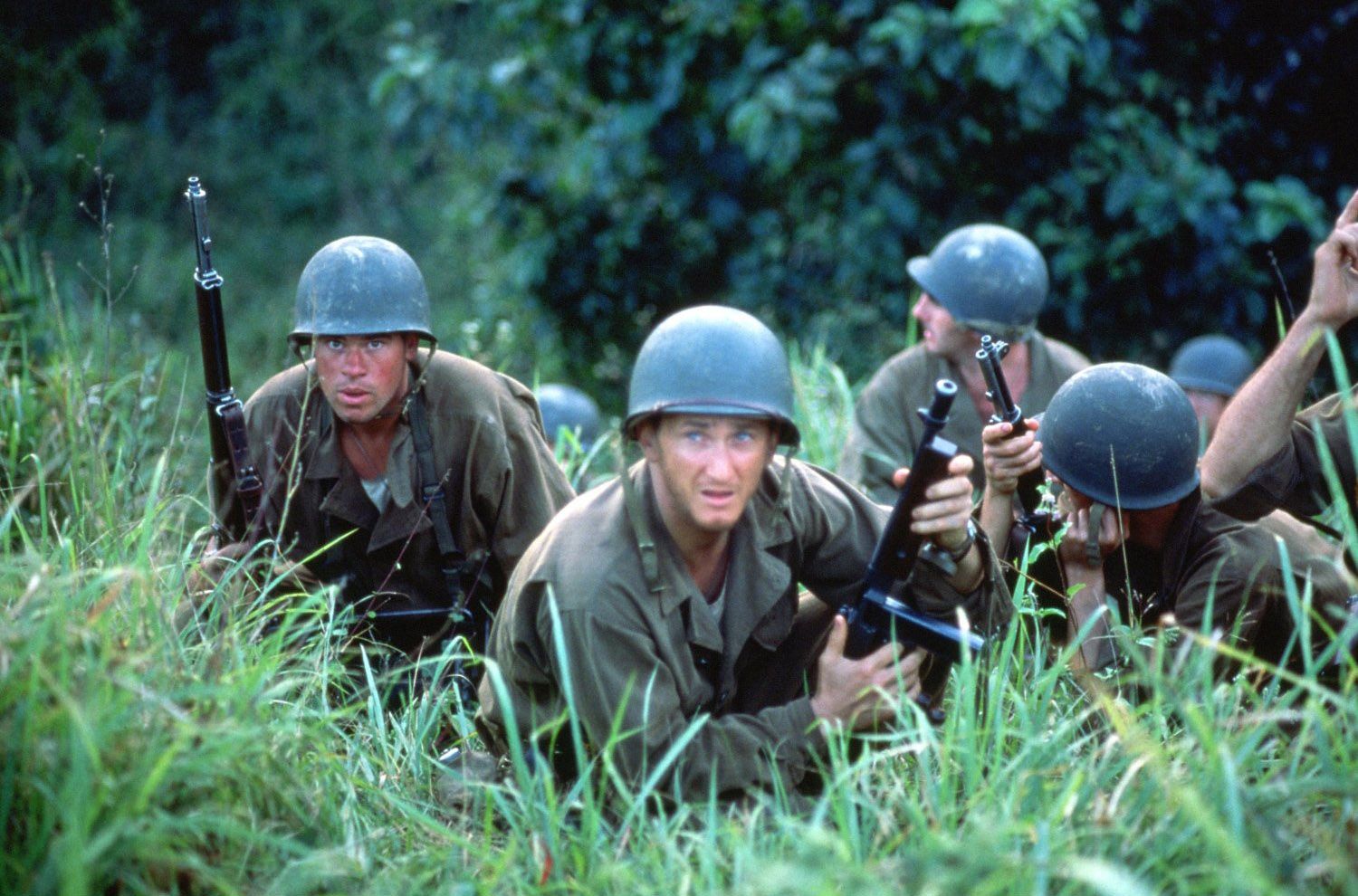
The narrative follows a diverse cast of soldiers in C Company as they land on the lush but treacherous island of Guadalcanal. Among them is Private Witt (Jim Caviezel), a thoughtful and introspective man who grapples with the meaning of life and his place in the world. He is joined by Sergeant Welsh (Sean Penn), a hard-bitten realist whose view of survival stands in stark contrast to Witt’s idealism, and Captain Staros (Elias Koteas), a leader torn between his loyalty to his men and his duty to command. Each soldier’s journey is unique yet interconnected, as they face their fears, confront their morality, and question the purpose of the conflict that surrounds them. Through their eyes, the film explores the human condition, peeling back the layers of each man’s soul.
The beauty of The Thin Red Line lies not only in its complex characters but in its visual storytelling. Malick’s direction emphasizes the natural splendor of the island, which serves as both a paradise and a battlefield. Lush greenery, tranquil rivers, and open skies contrast sharply with the horrors of war—scenes of men crouching in fear, the violence of gunfire, and the chaos of explosions. The camera lingers on each soldier’s face, capturing moments of introspection, doubt, and fleeting peace, creating an almost dreamlike sense of connection between humanity and nature. The film’s cinematography, marked by Emmanuel Lubezki’s stunning visuals, immerses the audience in a world that is both beautiful and cruel, highlighting the fragility of life in the midst of destruction.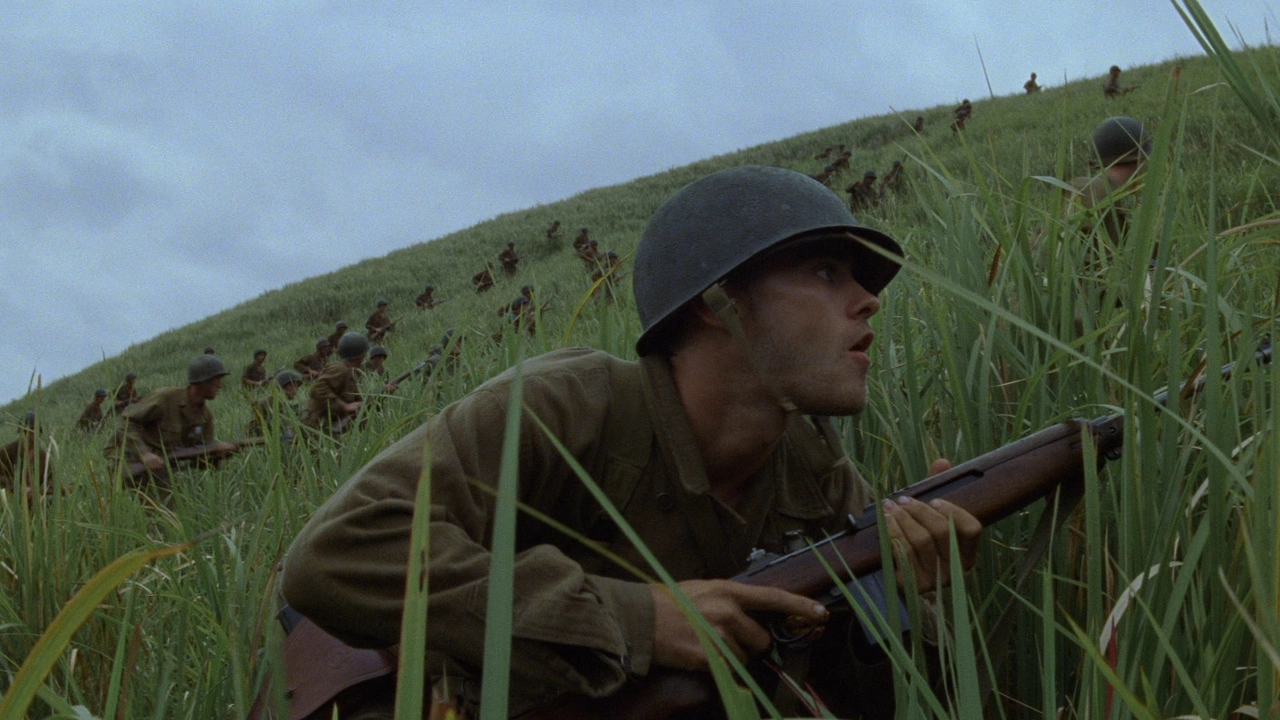
More than an action-driven war story, The Thin Red Line uses voiceovers and poetic monologues to reveal the inner thoughts and struggles of each character. These voiceovers act as windows into the soldiers’ minds, offering reflections on life, death, fear, and the nature of existence itself. The movie’s pacing is deliberate, almost meditative, encouraging the audience to ponder these philosophical questions alongside the characters. The film doesn’t shy away from the horrors of war, but it also asks why such horrors exist, posing profound questions about humanity’s capacity for both creation and destruction.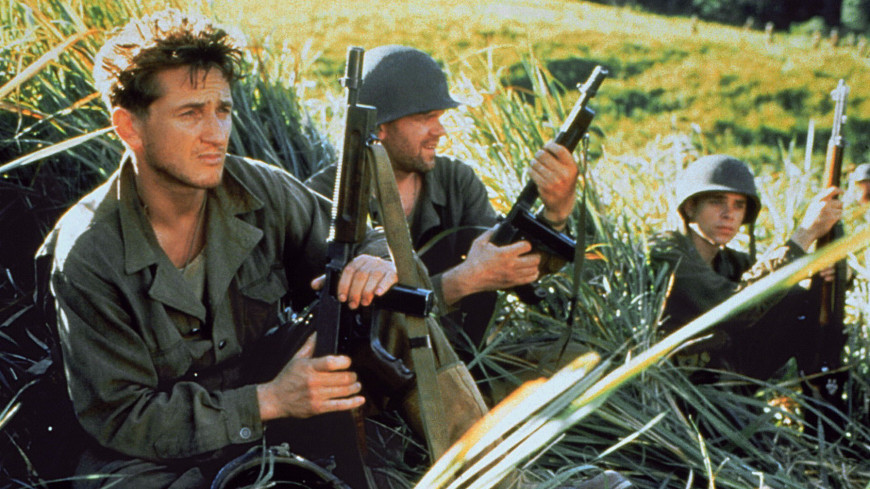
With an all-star ensemble cast, including Nick Nolte, John Cusack, Adrien Brody, Woody Harrelson, and George Clooney, The Thin Red Line explores the complex dynamics of courage, duty, and the moral dilemmas faced by soldiers. Each character’s personal journey is as impactful as the overarching story, creating a tapestry of human experiences that resonate with the viewer long after the film ends.
Ultimately, The Thin Red Line is an exploration of the human soul, capturing the contradictions of a world that can be both serene and violent. It’s a film that challenges the viewer to think deeply about life, war, and our place in a world where beauty and brutality coexist. An exquisite cinematic experience, The Thin Red Line is a haunting reflection on war, humanity, and the interconnectedness of all things, making it a must-watch for those who seek not just entertainment, but a journey into the heart of existence itself.











